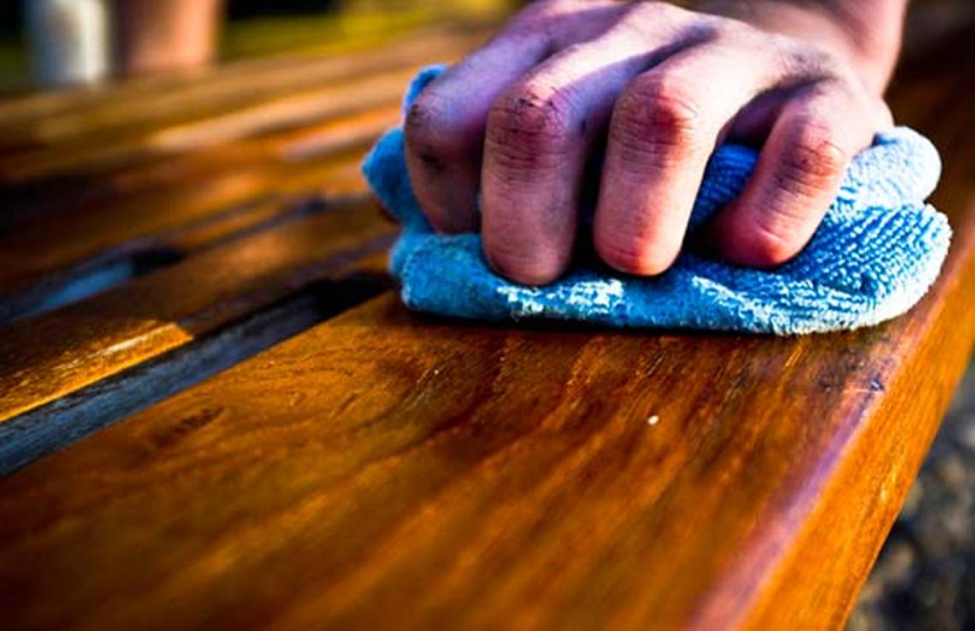Wood is the most common material to make indoor furniture. It’s durable and easy to maintain, but like any natural element, it needs regular care to preserve its wonderful look.
A lot has been written about the advantages of wooden furniture. Not only do they enliven any interior, give it character and charm, but above all they last a long time, are timeless, and simply beautiful.
And even though their resistance is far greater than chipboard or plywood furniture, carelessness can affect them considerably even if they have high durability.
First of all, to properly adapt to the cleaning and care method, we must be aware of how the surface of our furniture has been treated. Waxed, lacquered, and oiled furniture are the most popular.
If you are a wood lover, it is possible that you have all of its types in your home and know that each of them needs a different kind of treatment.
However, it is worth realizing that the greatest enemy of all furniture is excess water. It destroys the wood structure and is responsible for unsightly stains or swellings.
Therefore, the factor against which we should protect our furniture is above all, excess humidity, even during the cleaning phase.
1] Lacquered furniture is characterized by the fact that it creates a delicate coating on the surface of the furniture which protects it from external factors.
This type of impregnation is often chosen by families with children, mainly because furniture finished in this way is relatively easy to clean and is resistant to most of the wacky ideas that children come up with.
The furniture, especially the children’s beds, is also finished with lacquers, but in this case, they must have appropriate certificates. Lacquered furniture is best cleaned with soap and water using soft cotton or microfiber cloth well wrung out. In the case of heavier dirt, you can add a little dish-washing liquid to the water or, in extreme cases, alcohol, but this must be done with caution and moderation.
2]. In the case of waxed furniture, care takes a little more work. This type of impregnation is mainly used for elegant dressers and various antiques. For their maintenance, only products specifically dedicated to them should be used. Cleaning with water could irreparably damage the furniture, leaving unsightly stains on them. Waxed furniture is best preserved with the use of wax, applying the preparation with a soft cloth and making circular movements.
A useful cleaning accessory is made of chamois, that is, a sponge covered with a delicate sheepskin.
3]. Oil is used most of the time to impregnate worktops and tables. In addition to maintenance, this method allows you to simultaneously penetrate both deep into the wood, thus preserving and protecting it from UV radiation and giving it anti-static properties. Oiled furniture, on the other hand, is mainly preserved with oil, preferably the same one that was used in the past.
For the daily care of waxed and oiled furniture, the best solution will be to clean them gently with a soft cloth with the addition of a little clean water. Remember, however, that it should be slightly moistened and the whole thing should be dried very thoroughly immediately afterward.
An equally important issue is the right technique that is adopted in cleaning wooden furniture. It should always be done along with the wooden rings, in circular movements, and as gently as possible.
Also,
The wood should be cleaned regularly and from time to time it may need deeper treatments to restore its appearance and shine thus avoiding leaving room for unpleasant guests such as woodworms.
Regular cleaning
- Always try to protect this furniture from water and other liquids such as food and cosmetics, so it is advisable to bring coasters and place-mats to avoid damaging the surface.
- Regularly wipe with a dry, soft, lint-free cloth to remove dust and stains and maintain shine.
- Possibly there are sticky residues, clean with a damp cloth, and then wipe with a dry one, making sure not to leave streaks.
Thorough cleaning
- To protect the wood from humidity and dust, apply wax in the paste but not more than 2 times a year to avoid the accumulation of the same.
- To remove accumulations of wax, clean with a cloth moistened with white spirit or synthetic turpentine; be sure to follow all directions when using these products and then move on to carefully removing them with dry rags.
- The gloss can be used to give shine to your furniture, but not often be used because it can cause buildup.
- The oil soaps are useful for cleansing and giving shine, but should always be first tested on a small area to make sure they do not leave marks.
- Some types of wood with varnish finishes can be washed with a sponge or a soft cloth but always making sure that the surface allows it and in all cases, they must be dried very carefully.
Thanks to this, we will nourish the rings and avoid possible scratches.
If you have any questions do leave a comment in the comment box.
Can’t wait to hear from you.

